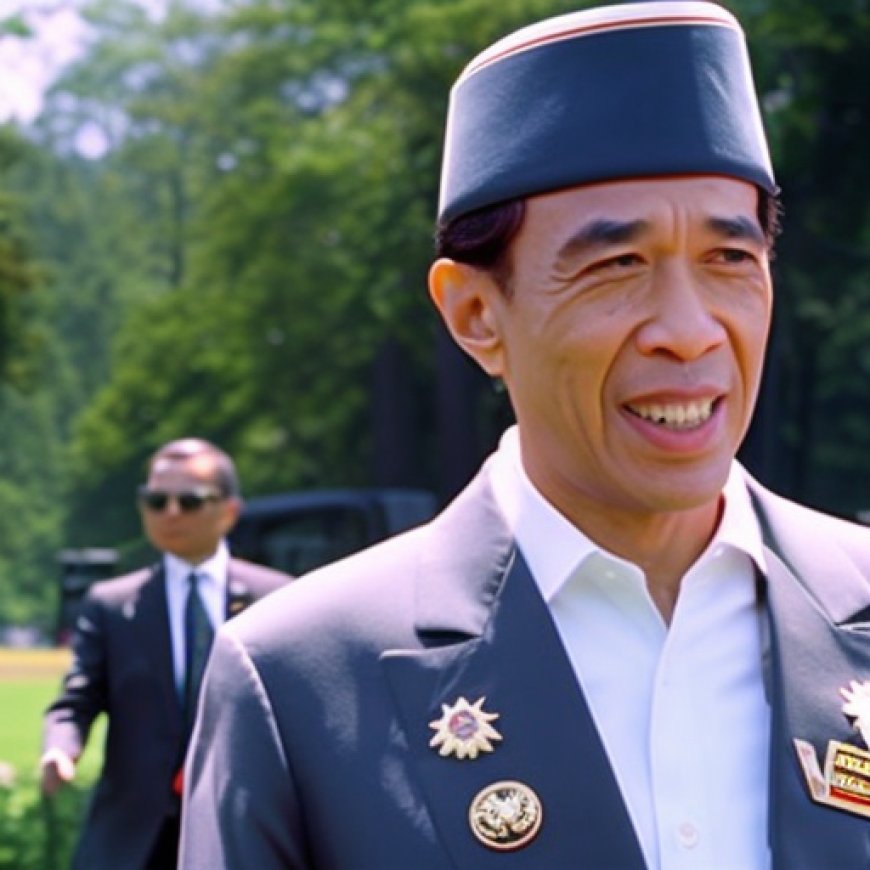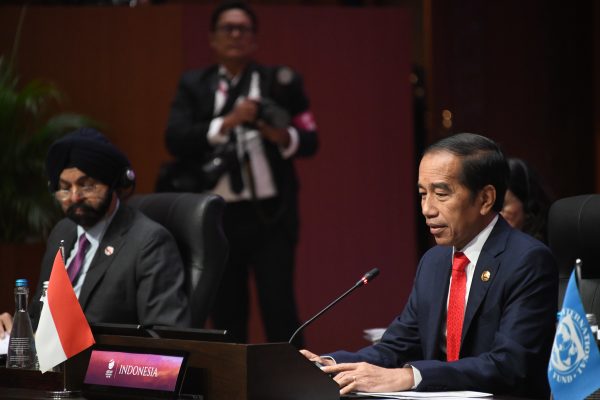Jokowi’s Washington Visit Could Boost Bilateral Ties – or Highlight Problems
Jokowi's Washington Visit Could Boost Bilateral Ties â or Highlight ... The Diplomat


Indonesian President Jokowi’s Visit to Washington: Shaping the Future of U.S.-Indonesia Relations

With major crises in Gaza and Ukraine, the Biden administration might be tempted to overlook the importance of Indonesian President Joko “Jokowi” Widodo’s mid-November visit to Washington. That would be a mistake. Indonesia is an important country that is heading into crucial presidential elections in early 2024, and the results of Jokowi’s visit could go a long way to shaping the next Indonesian government’s attitudes toward its relations with the United States.
Indonesians’ Concerns and Expectations
- Indonesians remain upset by President Joe Biden’s decision to skip the recent Indonesia-hosted East Asia Summit, which they took as a serious snub.
- Indonesian authorities are unhappy with what they see as Washington’s failure to deliver on the high-profile Just Energy Transition Partnership (JETP).
- Jokowi is looking for Biden to move forward on a proposed limited free trade agreement.
- The Gaza crisis will be at the top of Jokowi’s agenda.
U.S.-Indonesia Relations and Sustainable Development Goals (SDGs)
- U.S.-Indonesian security cooperation is good and trade has grown.
- The U.S. is Indonesia’s second-largest export market and fourth-largest source of foreign direct investment.
- Indonesia perceives the U.S. as weak compared to China as a reliable economic partner due to substantial Chinese funding on priority infrastructure initiatives.
Recommendations for the Biden-Jokowi Meeting
- Biden should listen to and engage with Jokowi seriously on the Gaza crisis, highlighting his efforts to encourage Israel to show restraint and promote a humanitarian pause.
- Biden should acknowledge and apologize for his decision to skip the recent Jakarta summit, emphasizing the importance of Indonesia.
- Biden should instruct his team to redouble efforts to mobilize funding for the Just Energy Transition Partnership (JETP) and get the initiative moving.
- Biden should agree to send trade officials to Jakarta to discuss a possible limited free trade agreement on critical minerals.
Some serious, last-minute work needs to be done to ensure that next week’s meeting between the leaders of the world’s second and third-largest democracies does more than highlight the differences and problems in the relationship.
SDGs, Targets, and Indicators in the Article
-
SDG 7: Affordable and Clean Energy
- Target 7.2: By 2030, increase substantially the share of renewable energy in the global energy mix.
- Indicator 7.2.1: Renewable energy share in the total final energy consumption.
-
SDG 8: Decent Work and Economic Growth
- Target 8.1: Sustain per capita economic growth in accordance with national circumstances and, in particular, at least 7 percent gross domestic product growth per annum in the least developed countries.
- Indicator 8.1.1: Annual growth rate of real GDP per capita.
-
SDG 9: Industry, Innovation and Infrastructure
- Target 9.1: Develop quality, reliable, sustainable and resilient infrastructure, including regional and transborder infrastructure, to support economic development and human well-being, with a focus on affordable and equitable access for all.
- Indicator 9.1.1: Proportion of the rural population who live within 2 km of an all-season road.
-
SDG 13: Climate Action
- Target 13.2: Integrate climate change measures into national policies, strategies and planning.
- Indicator 13.2.1: Number of countries that have communicated the strengthening of institutional, systemic and individual capacity-building to implement adaptation, mitigation and technology transfer.
-
SDG 16: Peace, Justice and Strong Institutions
- Target 16.3: Promote the rule of law at the national and international levels and ensure equal access to justice for all.
- Indicator 16.3.1: Proportion of victims of violence in the previous 12 months who reported their victimization to competent authorities or other officially recognized mechanisms.
Analysis
1. Which SDGs are addressed or connected to the issues highlighted in the article?
The SDGs addressed or connected to the issues highlighted in the article are SDG 7 (Affordable and Clean Energy), SDG 8 (Decent Work and Economic Growth), SDG 9 (Industry, Innovation and Infrastructure), SDG 13 (Climate Action), and SDG 16 (Peace, Justice and Strong Institutions).
2. What specific targets under those SDGs can be identified based on the article’s content?
Based on the article’s content, the specific targets under the mentioned SDGs are as follows:
– Target 7.2: Increase substantially the share of renewable energy in the global energy mix.
– Target 8.1: Sustain per capita economic growth in accordance with national circumstances and, in particular, at least 7 percent gross domestic product growth per annum in the least developed countries.
– Target 9.1: Develop quality, reliable, sustainable and resilient infrastructure, including regional and transborder infrastructure, to support economic development and human well-being, with a focus on affordable and equitable access for all.
– Target 13.2: Integrate climate change measures into national policies, strategies, and planning.
– Target 16.3: Promote the rule of law at the national and international levels and ensure equal access to justice for all.
3. Are there any indicators mentioned or implied in the article that can be used to measure progress towards the identified targets?
Yes, there are indicators mentioned or implied in the article that can be used to measure progress towards the identified targets. These indicators are as follows:
– Indicator 7.2.1: Renewable energy share in the total final energy consumption.
– Indicator 8.1.1: Annual growth rate of real GDP per capita.
– Indicator 9.1.1: Proportion of the rural population who live within 2 km of an all-season road.
– Indicator 13.2.1: Number of countries that have communicated the strengthening of institutional, systemic and individual capacity-building to implement adaptation, mitigation, and technology transfer.
– Indicator 16.3.1: Proportion of victims of violence in the previous 12 months who reported their victimization to competent authorities or other officially recognized mechanisms.
Table: SDGs, Targets, and Indicators
| SDGs | Targets | Indicators |
|---|---|---|
| SDG 7: Affordable and Clean Energy | Target 7.2: Increase substantially the share of renewable energy in the global energy mix. | Indicator 7.2.1: Renewable energy share in the total final energy consumption. |
| SDG 8: Decent Work and Economic Growth | Target 8.1: Sustain per capita economic growth in accordance with national circumstances and, in particular, at least 7 percent gross domestic product growth per annum in the least developed countries. | Indicator 8.1.1: Annual growth rate of real GDP per capita. |
| SDG 9: Industry, Innovation and Infrastructure | Target 9.1: Develop quality, reliable, sustainable and resilient infrastructure, including regional and transborder infrastructure, to support economic development and human well-being, with a focus on affordable and equitable access for all. | Indicator 9.1.1: Proportion of the rural population who live within 2 km of an all-season road. |
| SDG 13: Climate Action | Target 13.2: Integrate climate change measures into national policies, strategies, and planning. | Indicator 13.2.1: Number of countries that have communicated the strengthening of institutional, systemic and individual capacity-building to implement adaptation, mitigation, and technology transfer. |
| SDG 16: Peace, Justice and Strong Institutions | Target 16.3: Promote the rule of law at the national and international levels and ensure equal access to justice for all. |
Behold! This splendid article springs forth from the wellspring of knowledge, shaped by a wondrous proprietary AI technology that delved into a vast ocean of data, illuminating the path towards the Sustainable Development Goals. Remember that all rights are reserved by SDG Investors LLC, empowering us to champion progress together. Source: thediplomat.com
Join us, as fellow seekers of change, on a transformative journey at https://sdgtalks.ai/welcome, where you can become a member and actively contribute to shaping a brighter future.
|








